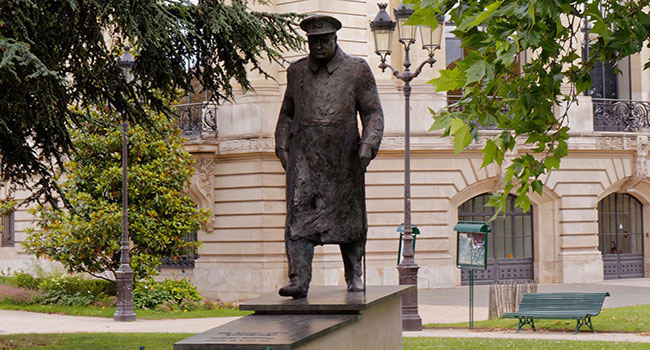 If I were a Brit – which I’m not – I’d be materially annoyed at the vandalization of Winston Churchill’s statue and the related attempts to remove it from its perch in London’s Parliament Square.
If I were a Brit – which I’m not – I’d be materially annoyed at the vandalization of Winston Churchill’s statue and the related attempts to remove it from its perch in London’s Parliament Square.
And in keeping with today’s enthusiasm for rhetorical hyperbole, I’d be tempted to consider it the thin end of the wedge in a campaign of cultural genocide against my history.
Yes, Churchill should be viewed as a whole person, warts-and-all. His entire historical record is fair game. As with anyone born in 1874, you’ll find lots of bits and pieces that don’t sit well with 21st century susceptibilities.
However, the warts-and-all rule should be applied to everyone, regardless of race or ideological orientation. And if so applied, there’ll be many called but few chosen.
For instance, one of the suggestions for Churchill’s monument is to replace him with Clement Attlee, the Labour politician who served as deputy prime minister in Churchill’s wartime coalition and subsequently defeated him in the United Kingdom’s 1945 general election.
But as historian Leo McKinstry points out, a detailed inspection of Attlee’s record would horrify the woke brigades. Notwithstanding his many estimable qualities, Attlee – born in 1883 – was also a man of his time, sharing many of Churchill’s attitudes towards foreigners and also being protective of Britain’s imperial interests.
Then there’s what British journalist Tanjil Rashid sees as the statue-topplers’ obsession with white guys. He’s skeptical of the underlying assumptions, sensing that it turns history into “a Eurocentric pantomime in which the fate of vast swathes of the world lay, improbably, in the hands of a band of nefarious British statesmen alone.”
Rashid sees this as a narrative in which the white race is central to history and others have little or no independent agency. And given that many of the statue-topplers are themselves white, he wonders about motivation. However perverse, perhaps it’s a subconscious form of white pride.
Two of the most incendiary issues relate to the notorious Atlantic slave trade and imperialism. The passion, though, is strangely devoid of historical context.
Evil though it undoubtedly was, the Atlantic slave trade was a far messier affair than most popular discussion allows. Some 90 per cent of the slaves transported to the Americas were, in fact, captured by Africans and sold to European traders. For several African kingdoms – such as the Asante Empire in Ghana – slaves were a prime export and a means of financing desired import goods.
The African-American historian Henry Louis Gates Jr. cut to the chase. To quote: “The sad truth is that without complex business partnerships between African elites and European traders and commercial agents, the slave trade to the New World would have been impossible, at least on the scale it occurred.”
There’s also the matter of slavery’s history, dating back to antiquity and extending to virtually all corners of the globe. As Valerie Hansen noted in The Year 1000, the number of Africans sold to the Islamic world between 800 and 1800 rivalled the numbers shipped to the Americas.
Slavery, then, was neither invented nor monopolized by dead white guys.
The same goes for imperialism.
Empires came in all colours and cultures. To cite just a few imperial enterprises, consider the various Chinese dynasties, the Persians, the Greeks, the Romans, the Mongols, the Mughals, the Mamluks and the Ottoman Turks.
One of the distinguishing features of the overseas European empires was the extensive migration to sparsely-populated continents. In addition to indigenous displacement, this created new societies in North America and Australia/New Zealand.
These societies were characterized by an evolution towards democratic governance, individual rights and economic prosperity. With all their manifold imperfections, they remain an immigration magnet for people from all over the world.
And contrary to what’s often asserted, statues and monuments aren’t just a reflection of current values. They also speak to the historical dimension of a society’s culture.
But if multiculturalism means anything, it ought to recognize that different groups have different stories, traditions and historical memories. Some of these will inevitably rub up against each other.
Still, just because someone else’s history makes you uncomfortable doesn’t give you a moral licence to erase it from public space. Diversity doesn’t – or at least shouldn’t – work that way.
It’s a point that the statue-topplers miss. Then again, righteous zealotry has always been intoxicating.
Troy Media columnist Pat Murphy casts a history buff’s eye at the goings-on in our world. Never cynical – well, perhaps just a little bit.
The views, opinions and positions expressed by columnists and contributors are the author’s alone. They do not inherently or expressly reflect the views, opinions and/or positions of our publication.


